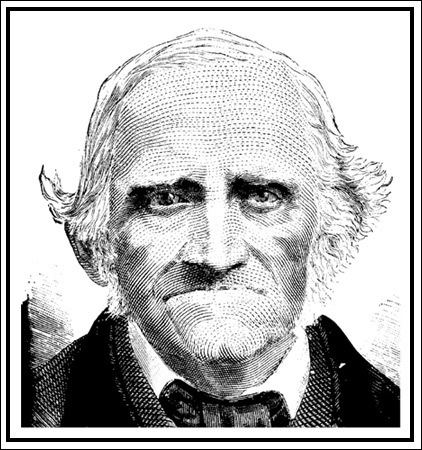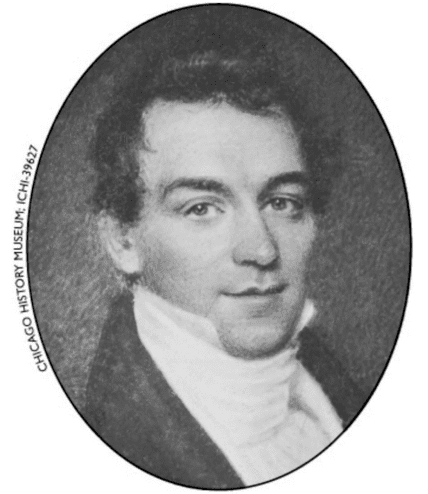Name John Kinzie Children John H. Kinzie | Siblings Thomas Forsyth | |
 | ||
People also search for Juliette Augusta Magill Kinzie, John H. Kinzie, Thomas Forsyth, Bill Forsyth | ||
Colorado symphony percussionists john kinzie and steve hearn
John Kinzie (December 3, 1763 – January 6, 1828) was a fur trader from Quebec who first operated in Detroit and what became the Northwest Territory of the United States. A partner of William Burnett from Canada, about 1802-1803 Kinzie moved with his wife and child to Chicago, where they were among the first permanent European settlers. Kinzie Street (400N) in Chicago is named for him. Their daughter Ellen Marion Kinzie, born in 1805, was believed to be the first child of European descent born in the settlement.
Contents
- Colorado symphony percussionists john kinzie and steve hearn
- Early life and first family
- Marriage and move to Chicago
- War of 1812
- Death and legacy
- References

In 1812 Kinzie killed Jean La Lime, who worked as an interpreter at Fort Dearborn in Chicago. This was known as "the first murder in Chicago".

During the War of 1812, when living in Detroit, Kinzie was accused of treason by the British and imprisoned on a ship for transport to Great Britain. After escaping, he returned to American territory, settling again in Chicago by 1816. He lived there the rest of his years.

Early life and first family

Kinzie was born in Quebec City, Canada (then in the Colonial Province of Quebec) to John and Anne McKenzie, Scots-Irish immigrants. His father died before Kinzie was a year old, and his mother remarried. In 1773, the boy was apprenticed to George Farnham, a silversmith. Some of the jewelry created by Kinzie has been found in archaeological digs in Ohio.
By 1777, Kinzie had become a trader in Detroit, where he worked for William Burnett. As a trader, he became familiar with local Native American peoples and likely learned the dominant language. He developed trading at the Kekionga, a center of the Miami people.
In 1785, Kinzie helped rescue two American citizens, sisters, who had been kidnapped in 1775 from Virginia by the Shawnee and adopted into the tribe. One of the girls, Margaret McKinzie, married him; her sister Elizabeth married his companion Clark. Margaret lived with Kinzie in Detroit and had three children with him. After several years, she left Kinzie and Detroit, and returned to Virginia with their children. All three of the Kinzie children eventually moved as adults to Chicago.
In 1789, Kinzie lost his business in the Kekionga (modern Fort Wayne, Indiana) and had to move further from the western U.S. frontier. The US was excluding Canadians from trade with the Native Americans in their territory. As the United States settlers continued to populate its western territory, Kinzie moved further west.
Marriage and move to Chicago
In 1800 Kinzie married again, to Eleanor Lytle McKillip. By the time they moved to Chicago, about 1802-1804, they had a year-old son, John. Eleanor had three more children in Chicago. Their daughter Ellen Marion Kinzie, believed to be the first European child of European descent born in Chicago, was born in 1805; followed by Maria Indiana in 1807, and Robert Allen Kinzie in 1810.
In 1804 Kinzie purchased the former house and lands of Jean La Lime, located near the mouth of the Chicago River. That same year, Governor William Henry Harrison of the Indiana Territory appointed Kinzie as a justice of the peace.
War of 1812
After American citizens built Fort Dearborn, Kinzie's influence and reputation rose in the area; he was useful because of his relationship with the Native Americans. The War of 1812 began between Great Britain and the United States, and tensions rose on the northern frontier.
In June 1812, Kinzie killed Jean La Lime, who worked as an interpreter at Fort Dearborn. He fled to Milwaukee, then in Indian territory. While in Milwaukee, he met with pro-British Indians who were planning attacks on American settlements, including Chicago. Historians speculate that La Lime may have been informing on corruption related to purchasing supplies within the fort and been silenced. The case has been called "Chicago's first murder." It has been also proposed the Kinzie's attempted to cover up the families early real estate transactions, substituting Francis May as the original owner (who died after eating at the son's [James] home).
Although worried that Chicago would be on heightened alert, a force of as many as 500 Indians attacked the small garrison of soldiers, their support and their families near the current intersection of 18th and Calumet, as they fled south along the lake shore after evacuated the Fort. The Fort Dearborn attack took place on August 15, 1812 and left 53 dead, including women and children, in a brutal massacre. Kinzie and his family, aided by Potawatomi Indians led by Billy Caldwell, escaped unharmed and returned to Detroit. Identifying as a British citizen, Kinzie had a strong anti-American streak.
In 1813, the British arrested Kinzie and Jean Baptiste Chardonnai, also then living in Detroit, charging them with treason. They were accused of having corresponded with the enemy (the American General Harrison's army) while supplying gunpowder to chief Tecumseh's Indian forces, who were fighting alongside the British. Chardonnai escaped, but Kinzie was imprisoned on a ship for transport to England. When the ship put into port in Nova Scotia to weather a storm, Kinzie escaped. He returned to American-held Detroit by 1814.
Formerly identifying as a British citizen, Kinzie switched to the United States. He returned to Chicago with his family in 1816 and lived there until his death in 1828.
Death and legacy
Kinzie suffered a stroke on January 6, 1828 and died a few hours later. Originally buried at the Fort Dearborn Cemetery, Kinzie’s remains were moved to City Cemetery in 1835. When the cemetery was closed due to concerns it could contaminate the city's water supply, Kinzie's remains were moved to Graceland Cemetery.
